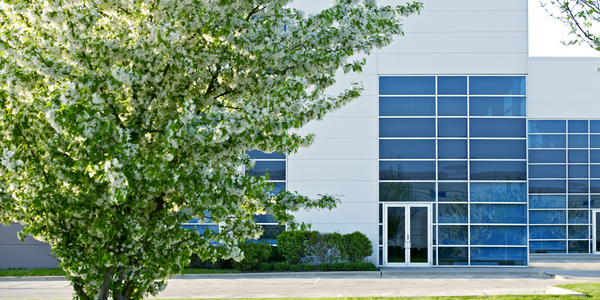Technology Category
- Networks & Connectivity - RFID
Applicable Industries
- Cement
Applicable Functions
- Sales & Marketing
Use Cases
- Time Sensitive Networking
Services
- System Integration
About The Customer
CUNA MUTUAL Group is a financial services company that has been in operation for over 80 years. The company is committed to helping credit unions, businesses, and individuals build financial security. With a revenue of $5B and assets worth $44.3B, CUNA MUTUAL Group is constantly innovating to stay ahead of the evolving financial landscape. The company operates on the principle of 'people helping people' and aims to create a more equitable financial system that improves the lives of their customers.
The Challenge
CUNA MUTUAL Group, a financial services company with $5B in revenue and $44.3B in assets, was facing a significant challenge in managing their sales data. The company was heavily reliant on spreadsheets for reporting, with 70 people depending on these reports on a weekly basis, resulting in the creation of 4,000 spreadsheets annually. The data frequency was also an issue, as salespeople were receiving weekly information, while real-time data was available in Salesforce. The process of increasing data frequency was unsustainable and inefficient. Additionally, the company was using a point-based sales compensation system, which was driving the wrong behavior among employees who were focusing on maximizing points rather than revenue.
The Solution
The company adopted Alteryx, a data analytics platform, to address these challenges. The platform enabled the company to eliminate the use of spreadsheets and move to daily updates, saving thousands of hours and cutting cycle time by a third to a half. The company also developed a new revenue-based sales compensation system using Alteryx. The build was completed in three months, with the team creating a single source of truth by gaining access to source systems, aggregating, cleaning, and blending the data. They then created a data science model based on metrics and customer attributes to forecast revenue. The new system was rolled out to all 500 frontline salespeople, leading to the best sales results in the past 10 years.
Operational Impact
Quantitative Benefit

Case Study missing?
Start adding your own!
Register with your work email and create a new case study profile for your business.
Related Case Studies.

Case Study
System 800xA at Indian Cement Plants
Chettinad Cement recognized that further efficiencies could be achieved in its cement manufacturing process. It looked to investing in comprehensive operational and control technologies to manage and derive productivity and energy efficiency gains from the assets on Line 2, their second plant in India.

Case Study
Digital Transformation of Atlanta Grout & Tile: An IoT Case Study
Atlanta Grout & Tile, a Tile, Stone & Grout restoration company based in Woodstock, Georgia, was facing challenges with its traditional business model. Despite steady growth over the years, the company was falling behind the web revolution and missing out on the opportunity to tap into a new consumer base. They were using independent software from different vendors for each of their department information and workforce management. This resulted in a lot of manual work on excel and the need to export/import data between different systems. This not only increased overhead costs but also slowed down their response to clients. The company also had to prepare numerous reports manually and lacked access to customer trends for effective business decision-making.

Case Study
Revolutionizing Construction Equipment Rental: A Case Study on ProsRent and ENO8
ProsRent, a startup that won the 'Best Financial Opportunity' and 'Best Pitch' at CodeLaunch 2016, aimed to revolutionize the way construction professionals source and rent heavy equipment. In the construction industry, project managers and contractors typically rent heavy equipment from supply companies. However, predicting inventory can be challenging, and finding the required equipment at the right time and place can be a hassle. If the preferred vendor doesn't have the required equipment, it results in wasted time and money in searching for it, often leading to higher costs due to non-preferred rates and increased delivery costs if the vendor is located far from the job site. Suppliers, on the other hand, desired access to a wider base of trusted renters that they didn't have to vet themselves and wanted to offer dynamic rental pricing based on demand and availability in their market. ProsRent's challenge was to produce a minimum viable product that was fast and first to market but also strong enough to engender loyalty and repeat business from the target market.

Case Study
AI-based Automation for Commercial Office HVAC: A Verdigris Case Study
Modern buildings are required to run longer hours, support a variety of end uses, and contribute to higher levels of economic productivity, leaving a thin margin for error. However, even the most advanced building and environmental control systems have failed to adequately support facilities and operations management. Buildings are often inefficient and the people using them are underserved. To meet occupant comfort and maintain cost and energy efficiency, a dynamic, AI-assisted approach is needed.

Case Study
Revamping EE's Legacy ERP: A Case Study on BT's Strategic Transformation
EE, even after its merger with BT, was operating its ERP estate on legacy infrastructure, hosted on the premises of a third-party supplier. This outdated system resulted in a volume-based operational model, higher time to market, longer delivery cycles, and unsatisfactory customer experience. BT recognized the need for a strategic transformation of these aging ERP systems and sought a partner who could proactively manage application services. The partner was also expected to handle development requirements associated with application management services, drive accountability, and ownership with a time and target-driven transformation of these services. BT's primary goals were to improve customer experience, reduce cycle time, and measure these improvements with precision.








